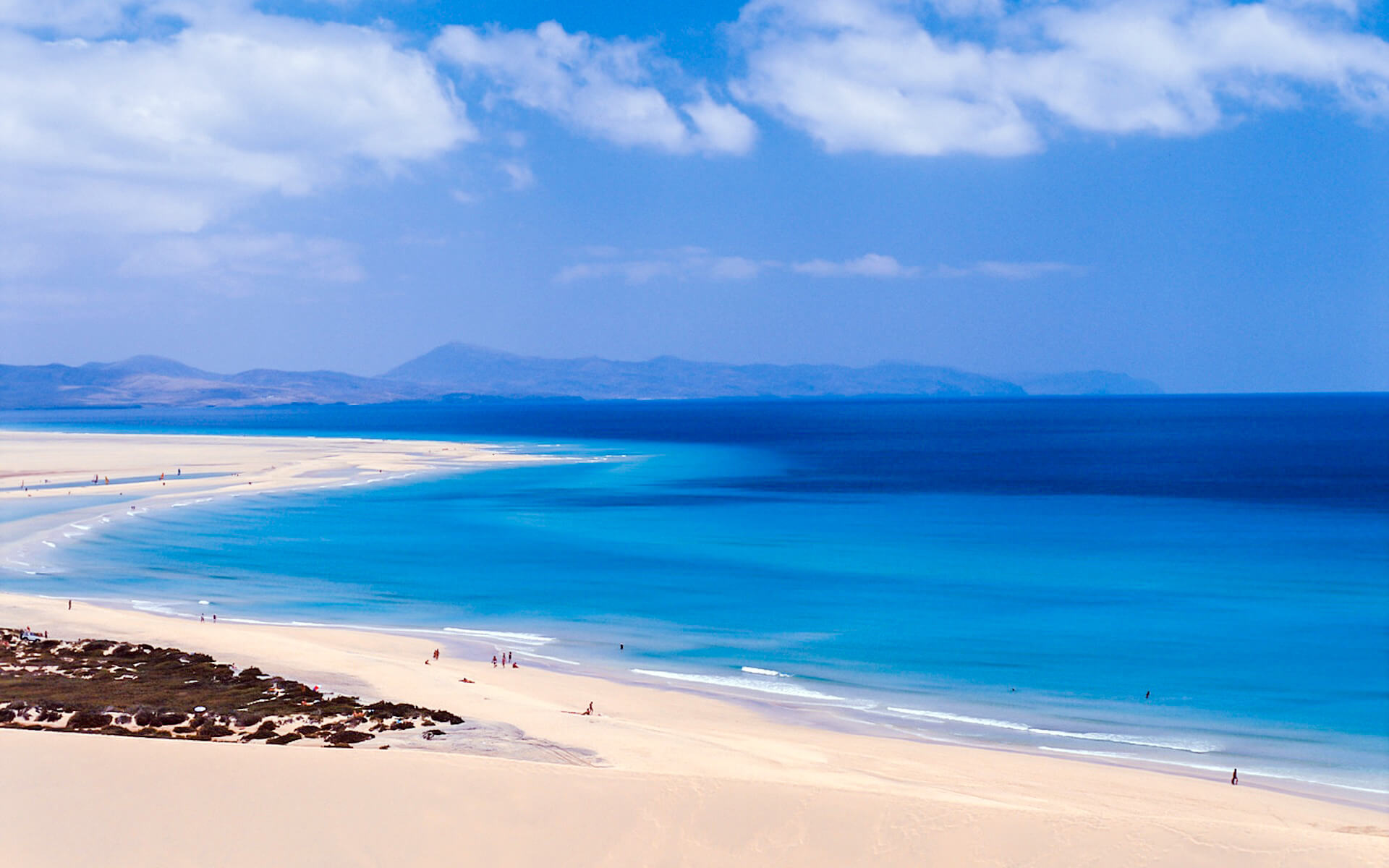[lwptoc]
Fuerteventura (literally “strong fortune,” although others read it as “Strong Winds” or a translation of the French phrase for “Great Adventure”) is one of the Canary Islands, located in the Atlantic Ocean off the coast of Africa. It is officially part of Spain. It is the second biggest of the Canary Islands, after Tenerife, with an area of 1,660 square kilometers (641 square miles). In May 2009, UNESCO designated it as a biosphere reserve. Puerto del Rosario is its capital.
In 1965, the first tourist hotel was erected, followed by the building of Fuerteventura Airport at El Matorral, ushering in a new age for the island. Fuerteventura, with its 3,000 sunny hours per year, has firmly established itself as a significant European vacation destination. Despite having fully established tourist amenities, the island has avoided the overdevelopment seen on some other islands, and hence caters to travelers drawn by its rough natural beauty.
The summer Trade Winds and winter Atlantic swells make this a year-round surfers’ paradise, with more exposed areas on the north and west shores, such as Corralejo and El Cotillo, being particularly popular. Wind surfing is practiced at many areas along the island. Sailors, scuba divers, and big-game anglers are all lured to these brilliant blue Atlantic seas, which are frequented by whales, dolphins, marlin, and turtles. Hikers are drawn to this island because of the various hills that dot the landscape.
Many areas have beautiful sandy beaches. Strong surf may be expected on western beaches, such as those around El Cotillo. Popular beaches include those next to the huge sand dunes east of Corralejo, as well as the more sheltered broad sandy shoreline of the Playa de Sotavento de Jandia on the southeastern coast between Costa Calma and the Morro Jable. Naked sunbathing and swimming are practically universal on all beaches.
Much of the interior, with its vast plains, lavascapes, and volcanic mountains, is protected, however organized excursions and car access are available.


